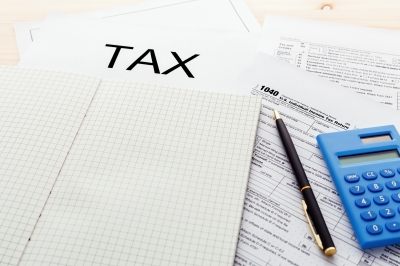Is Your Paycheck Bigger Today? That’s the Payroll Tax Deferral and This is Important Info You Need to Know
Is your paycheck bigger today? Hopefully, you diligently follow the amount of each paycheck, or at the very least check your direct deposits to ensure they’re what they should be.
If so, you may have seen a larger amount than normal…that’s the federal payroll tax deferral that President Trump recently authorized.
The payroll tax deferral executive order was one of four that President Trump signed last month in an effort to bypass Congress’ inaction on Covid-19 relief legislation.
The goal: Get more money into the pockets of Americans to help during this uncertain time.
While getting more money each pay period sounds good, there are some very important points of which you need to be aware.
Payroll Tax and the Deferral
First, what is the payroll tax and how much extra pay might you expect?
The federal payroll tax for employees is 6.2% of an individual’s pay before any taxes are taken out. Employers pay an additional 6.2% per employee, per pay period for a total federal payroll tax of 12.4% on wages, salaries and tips paid to employees.
The employee portion of the tax is automatically withheld by employers and paid directly to the Internal Revenue Service.
The monies associated with the tax fund the federal Medicare and Social Security programs.
The payroll tax deferral executive order allows employers to stop withholding the payroll tax, effectively increasing the employee’s pay.
The dates the payroll tax deferral executive order is effective are September 1, 2020 – December 31, 2020.
However, the executive order did not require employers to stop withholding the tax, and we’re now seeing that some have elected not to do so.
Which is why you may see an increase in your paycheck’s amount, and also why you may not.
Some employers decided to not offer the deferral.
Others provided employees a choice.
And some, primarily federal government employees, had no choice, and are receiving the payroll tax deferral.
The differences are a result of the payroll tax being a deferral, rather than a holiday.
A tax deferral requires that the taxes not collected be paid at a future date.
The only way a tax deferral becomes a holiday (where the tax is not required to be repaid) is if Congress passes legislation waiving the repayment.
And right now, whether Congress will take that action, is completely unknown.
So, as of now, any employee receiving the payroll tax deferral will have to repay that money in early 2021.
The repayment will likely occur as a result of an employer withholding double an employee’s typically withheld payroll tax amount.
Here’s a quick example.
John earns $40,000 per year before taxes.
His payroll tax amount each month would be approximately $206.
As a result of the deferral, John would receive a total of $824 more in his paychecks over the deferral period (September – December).
If the payroll tax deferral is not forgiven by Congress, John would likely pay $412 in payroll taxes each month, rather than the typical $206, January – April of 2021 to pay back the deferred taxes.
As you can see, that would be a most unwelcome surprise to John’s budget if he weren’t aware of, and prepared for, the possibility that the deferral won’t be forgiven.
Which is why, if your employer is offering the deferral, you should hold that extra money aside to see what happens as Covid-19 relief measures are debated in the U.S. Congress.
If Congress doesn’t take action to forgive the payroll tax deferrals, then you can use the saved money to offset the extra withholding that will take place in 2021, effectively keeping your monthly income the same as it would normally be.
If Congress does turn the deferral into a holiday, then you’ve got a nice amount of cash to do with as you please.
What to Do with Your Deferral Money
You definitely want to set your deferred money aside to avoid the impulse to spend it.
An account separate from the one(s) you normally use would be preferable.
We list a number of High Yield Savings Accounts (although these days the “high yield” term is used extremely loosely) on our HYSA page which may be appropriate.
Also, we’ve written a number of posts on the SoFi Money account, which is currently offering a new account bonus of $50 when $500 or more is deposited to the account within 14 days. That’s a nice return, and much better than you’ll get in a High Yield Savings Account. You can read more at this link.
Or, just keep it in your current bank account, making sure to not touch the extra you’ve received from the deferral until a final answer is known as to whether the money is yours to keep or will need to be paid back.
Wrap Up
In an effort to provide working Americans with a little extra cash during these challenging times, President Trump signed an executive order deferring the federal payroll tax from September 1 – December 31, 2020.
However, for the deferred amount not to have to be repaid in 2021, Congress must pass legislation to that effect.
Until there is a definitive answer regarding repayment or forgiveness, it’s best to save the extra money you may be receiving to avoid a financial shock at some point early next year.
Did your employer stop withholding federal payroll taxes on your paycheck?
wallet image courtesy of scottchan at freedigitalphotos.net


:max_bytes(150000):strip_icc()/youngmanworkingonlaptopathome-06657735274546d387cb3267a214086a.jpg?w=150&resize=150,150&ssl=1)
:max_bytes(150000):strip_icc()/GettyImages-954343262-9ec5121578524bf7b40fc283330e4b06.jpg?w=150&resize=150,150&ssl=1)